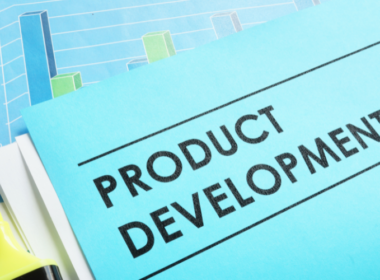Remember Tony Stark whipping up holographic blueprints in his Werkstatt with a flick of his wrist? Industrial AR used to be the stuff of Hollywood dreams, reserved for superheroes and sci-fi flicks. But buckle up, folks, because the future’s here, and it’s wearing safety goggles instead of a billionaire playboy’s smirk.
Yes, industrial AR is no longer a plot device for saving the world (though it may very well save some manufacturing jobs). It’s a burgeoning revolution quietly transforming factories, mines, and construction sites from gritty, analog landscapes into data-driven havens of efficiency and precision. Think Iron Man’s swagger, minus the explosions and exorbitant R&D budget.
Imagine technicians donning AR glasses that overlay 3D instructions onto complex machinery, guiding them through maintenance procedures with pinpoint accuracy. Picture miners navigating labyrinthine tunnels with holographic maps, maximizing resource extraction while minimizing risk. Envision architects strolling through construction sites, visualizing finished structures before a single brick is laid, ensuring flawless execution from blueprint to reality.
These are just glimpses of the mind-bending possibilities unfolding in the realm of industrial AR. And to say it’s exciting is an understatement akin to calling the Great Wall of China “a brick fence.” So, let’s delve into the real-world magic of augmented reality, where innovation isn’t just a billionaire’s hobby, it’s the key to unlocking a smarter, safer, and downright badass future for the blue-collar world.
The Market Today
Advancements in Augmented Reality (AR) have opened up exciting possibilities for user experiences.
A standout example is Nike’s retail stores, where they’ve incorporated AR to enhance how customers interact with their products, especially on the occasion of their 50th anniversary.
But AR isn’t just for online shopping; there are various ways to bring it into your business to make things more interesting.
Moreover, the trends in the Augmented Reality market keep changing how customers experience things, making it a great way to boost conversions.
According to GlobeNewswire, Augmented Reality (AR) Market Size to Hit USD 461.25 Billion at a CAGR of 41.50% by 2030
This growth is mainly fueled by the high demand for AR app development and the continuous improvements in hardware devices.
So, if you are a startup or an established business looking to leverage AR technology, here are some key augmented future reality trends to watch out for.
Emerging trends in Industrial Augmented Reality (AR)
Spatial Computing: Paving the Way for AR and VR’s Future
Spatial computing is like a magic bridge connecting the real world with the digital one. It uses advanced sensors and smart computer vision to create lively digital versions of actual places, letting us smoothly dive into digital adventures. This tech is the backbone of AR and VR, helping gadgets understand and play around in the real world. Thanks to cool upgrades in sensors, cameras, and computer vision, spatial computing is getting even smarter. This means AR and VR can now place digital stuff in real places like never before. Think virtual furniture in your living room to plan home decor or interactive virtual maps guiding you in the real world.
Big brands are already embracing this. Take, for instance, how virtual furniture can be magically placed in your living room using AR, helping you decide on home decor. Or imagine interactive maps popping up in the real world, guiding you through a city.
In essence, spatial computing is not just tech jargon; it’s the powerhouse behind gaming, architecture, navigation, and innovative advertising. It’s the tech that turns the virtual into reality seamlessly.
Mixed Reality (MR): Where Virtual and Real Worlds Meet
Mixed Reality (MR) is a revolutionary technology that combines the strengths of both AR and VR. It skillfully merges virtual elements with our real-world surroundings, crafting interactive and immersive experiences. Whether it’s gaming, education, or healthcare, MR is changing the way we engage with digital content. Imagine delving into imaginary realms where your surroundings seamlessly blend in or working with virtual objects right in your physical space. Reputed brands like Microsoft, with their HoloLens, bringing MR into industries like healthcare and manufacturing.
Metaverse – A New Way to Engagege
The metaverse is the most emerging AR trend transforming the entire user experience landscape.
Businesses across the board, from online shops to music labels, artists, and fashion brands, are eager to tap into the metaverse to captivate audiences.
In simpler terms, Forbes describes the metaverse as a blend of virtual reality and mixed reality, offering users a new way to engage.
Whether through a headset or a regular web browser, the metaverse is an AR trend reshaping how users connect with products across various industries.
Microsoft, a tech giant, is at the forefront of shaping the AR experience. Their innovative approach involves fusing cloud computing with AR/VR excellence, setting the stage for a fascinating case study.
For instance, the “Art of Work” project empowered UK businesses to craft unique AR-driven customer experiences. Microsoft Azure customers are envisioning SAP migration, providing customers with enhanced flexibility and scalability in the process.
5G Unleashes Next-Level AR and VR
The dawn of 5G networks and the widespread use of edge computing is transforming the world of Augmented Reality (AR) and Virtual Reality (VR). Think of it as a powerhouse upgrade! 5G’s super-fast speed and minimal delays make AR and VR smoother, like upgrading from a regular video call to an HD movie streaming experience. This high-speed magic is not alone; edge computing kicks in by processing data closer to you, making everything happen in real time.
Big brands like Verizon are already making waves in the 5G arena, setting the stage for more innovations. These advancements aren’t just for tech enthusiasts; they’re making waves in fields like remote collaboration and live events, providing us with a glimpse into a future where our virtual experiences are as real as it get. The 5G and edge computing combo is like the superhero duo for the AR and VR world, bringing to life applications that were once just dreams.
Mobile AR Apps for Your Business
Understanding Augmented Reality (AR) market trends is crucial, especially when considering the platform diversity. Among these trends, mobile Augmented Reality stands out as a rapidly growing force. According to Statista, the number of smartphone users is projected to surpass 7,690 billion by 2027, emphasizing the immense potential of mobile AR.
Businesses can tap into this potential by utilizing mobile AR to engage a broader audience through captivating graphics tailored specifically for smartphones. If you’re seeking assistance in Augmented Reality App Development, our team of experts possesses in-depth knowledge of modern tech stacks, ensuring a seamless and cutting-edge experience.
A prime example of the impact of mobile AR is evident in the image filters available on popular social media apps like Snapchat and Instagram. For enterprises and businesses looking to capitalize on this trend, leveraging AR app development services offers the opportunity to create customized mobile Augmented Reality experiences. Stay ahead of the curve by embracing the transformative potential of mobile AR for your business.
Revolutionize Remote Collaborations with AR
In today’s world, remote collaborations have become a cornerstone in various industries, from manufacturing to healthcare. Augmented Reality (AR) applications play a pivotal role in enhancing these collaborations by integrating computer-generated graphics, enabling on-site employees to visualize and comprehend explanations from their remote counterparts.
Imagine a scenario in the manufacturing industry, where intricate processes take place in remote locations. AR steps in as the game-changer for remote collaborations. For instance, consider cryogenic operations in oil refineries, where maintaining precise temperatures is crucial. When on-site employees encounter challenges requiring expert assistance, AR comes to the rescue by providing virtual tools for critical response support.
This isn’t just theoretical; it’s happening in real life. Companies in various sectors are leveraging AR to bridge the gap between on-site challenges and expert solutions. The era of seamless remote collaborations has arrived, and AR is at the forefront, transforming how industries operate.
Haptic Feedback in Realistic Experiences
Imagine feeling the texture of virtual objects as if they were real. That’s the magic of haptic feedback technology, adding a touch of realism to Augmented Reality (AR) and Virtual Reality (VR) experiences. Advanced haptic devices like gloves and vests take this to the next level, letting users sense and touch things in the virtual world, making the experience more immersive and lifelike.
Brands like Oculus and Tesla are embracing these haptic advancements. Oculus, with its VR headsets, uses haptic feedback to simulate sensations in various applications, from gaming to educational content. Tesla, in their advanced driving simulations, employs haptic feedback to replicate the feel of different road conditions and vehicle responses.
The applications are vast – from realistic medical simulations to engaging training programs and even enhancing entertainment experiences. The combination of multiple senses, including sight, sound, and touch, creates a seamless blend of reality and virtuality, opening up exciting possibilities for diverse industries.
To Sum it up
As we hurtle towards the horizon of industrial AR, one thing is abundantly clear: the future of work is no longer a hazy prediction, but a vibrant reality unfolding before our eyes. The innovations explored in this article are merely the tip of the digital iceberg, a glimpse into a landscape where humans and machines collaborate in seamless harmony, fueled by the magic of augmented reality.
The boundaries between physical and digital are blurring, transforming workflows, and unleashing a wave of human-machine synergy. The potential is staggering, not just for productivity and profit, but for worker well-being and environmental sustainability. By minimizing errors, optimizing processes, and reducing reliance on heavy machinery, AR has the power to redefine how we work, live, and interact with the world around us.
But this revolution is not without its challenges. Privacy concerns, technological hurdles, and ethical considerations must be addressed with foresight and responsibility. As we weave AR into the fabric of our industries, we must ensure it serves humanity, not replaces it. We must embrace its potential while safeguarding the values that make us human.
So, as we stand at the threshold of this augmented future, let us remember this: the key to navigating this brave new world lies not in technology alone, but in our ability to adapt, collaborate, and leverage the power of AR for the greater good. The future of work is here, and it’s time to step into it, goggles firmly in place, hearts open, and minds brimming with the possibilities that await.








